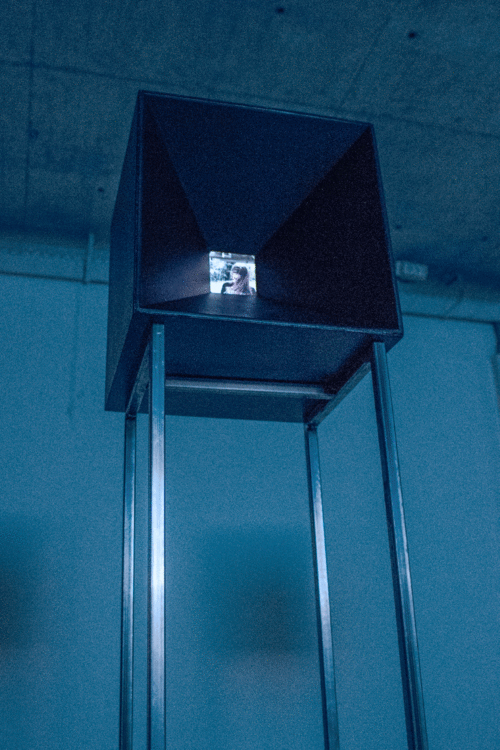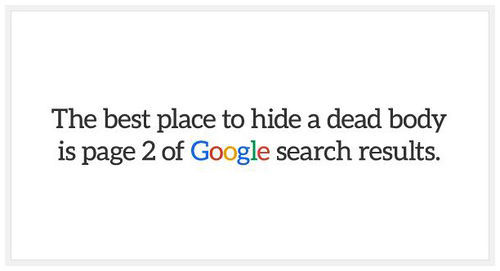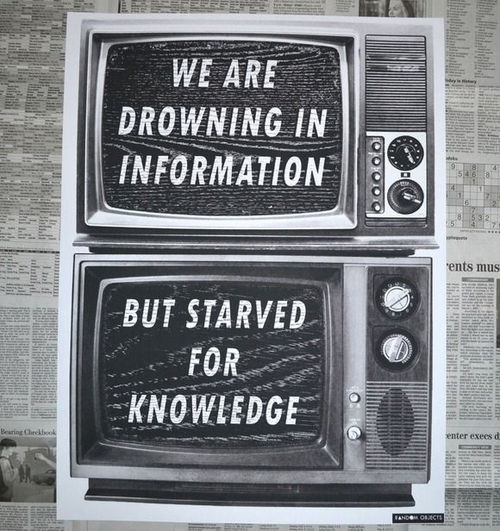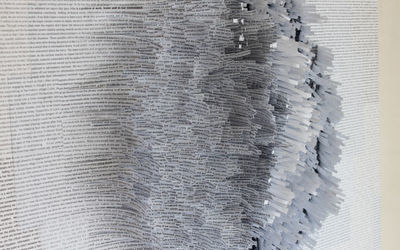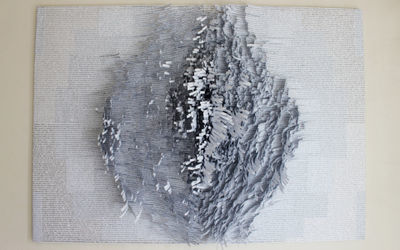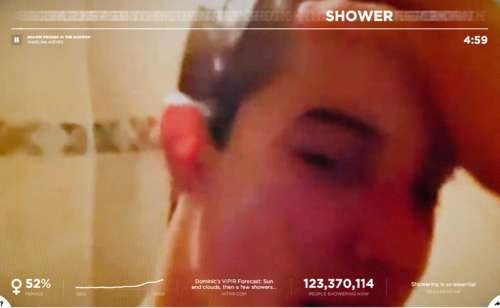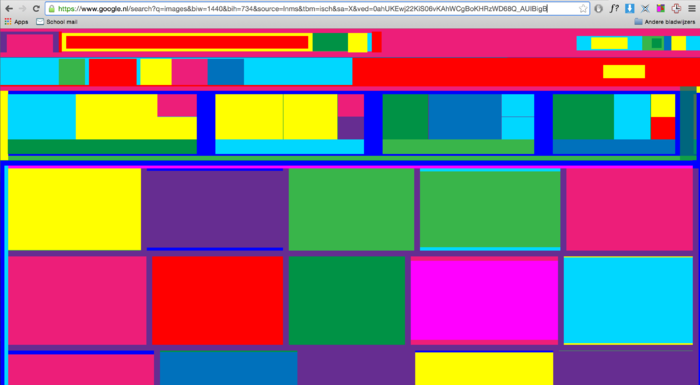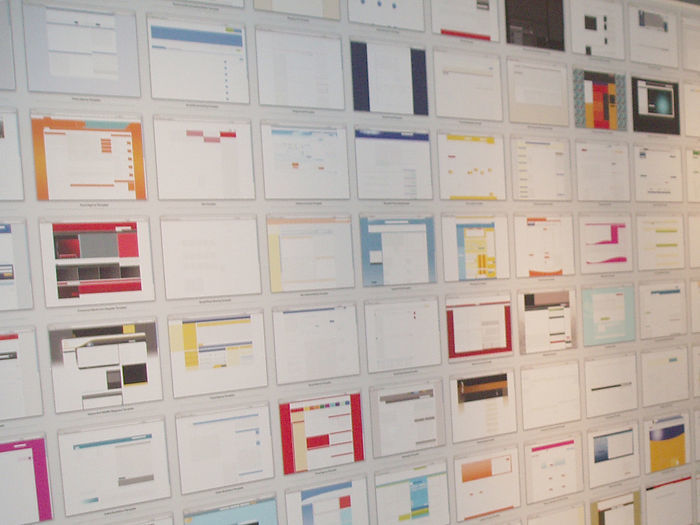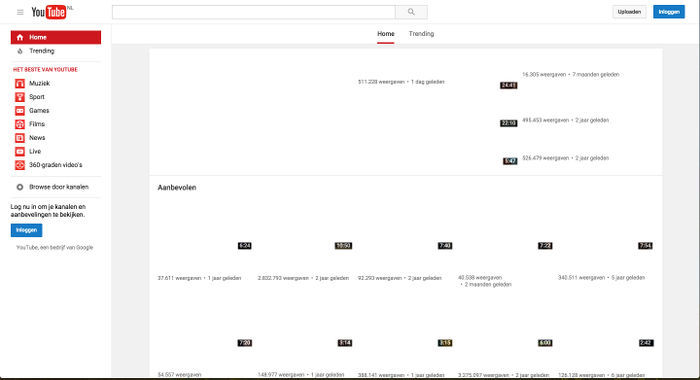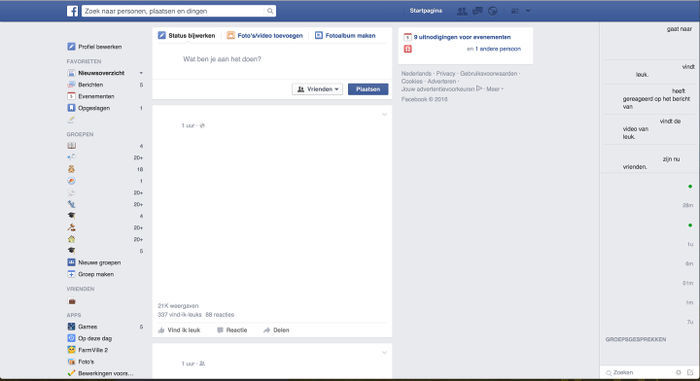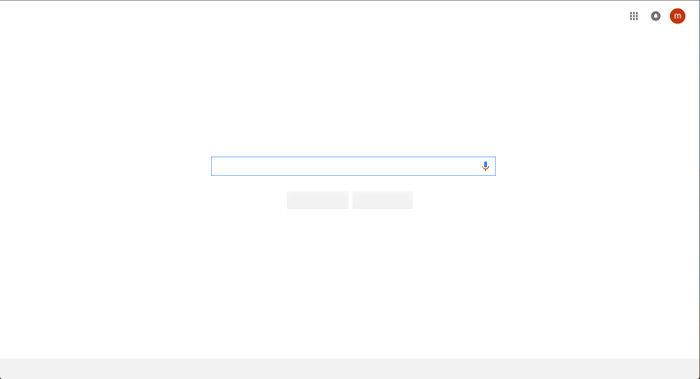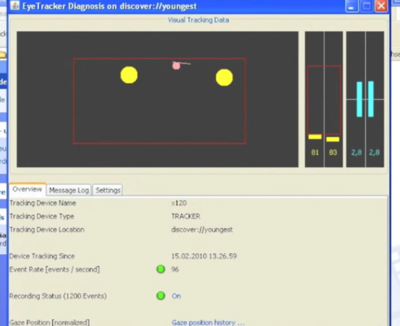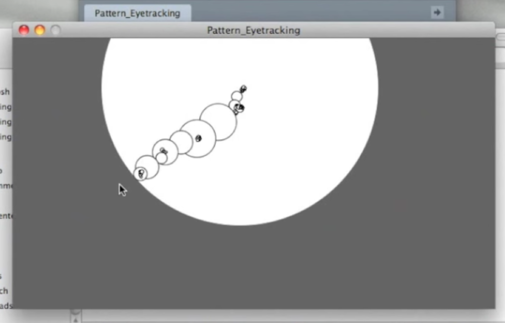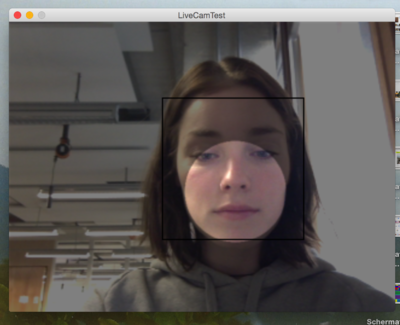User:Meikebrand/UTC
⌇⌇⌇⌇ UNRAVEL THE CODE Q10 ⌇⌇⌇⌇
Quater 9 / Crafting future memories - Image Overload
Around 671 photos are being posted on Instagram every single minute all over the world. The feed of photos is way too much to ever be able to see, because it’s updating all the time. Even on your own account, in your own circle, you can’t keep up what’s being posted all the time. If you scroll through a media like Instagram, you get thousands of the same looking picture. Because of the size, because of the filters and the same kind of photos; none of these photos will remain in your memory.
⌇
Quater 10 / Unravel the code
From Image Overload to Information Overload
⌇
Search terms:
information overload
information pollution
interruption overload
age of interuption
overchoice
⌇
Too much information - Google “information overload” and you are immediately overloaded with information: more than 7m hits in 0.05 seconds.
For some time now the image underneath has been circulating online. 'The best place to hide a dead body is page 2 of Google search results.' The joke accurately introduces the core question of this essay. What is the effect of the list as the most used structure of presenting online information on the way people organize and find this information? What does it mean when people constantly use the list when dealing with information?
The joke in the image asks a deeper question. Searching for information online, do we even pay attention to results that are kept out of our view because of the hierarchical order? Do we fall victim to the hierarchic power of linear search results? The website Digital Synopsis, where the screenshot above comes from, offers an interesting statistic: ‘according to research by the online ad network Chitika, page one results enjoy a whopping 95% of all search traffic’. Probably most users who look for information through corporate web indexers like Google or Bing (and how else would they do that?), share this desire for a fast and easy information recalling.
Nikos Voyiatzis - The Effect of the List
http://networkcultures.org/longform/2015/11/06/the-effect-of-the-list/
⌇
In his 1982 book Megatrends, John Naisbitt (professor of future studies) wrote “We are drowning in information but starved for knowledge.” While written over 30 years ago, that line is as very true today. I interpreted ‘information’ as from a abundance of sources, however the main one is the internet. It's a sense of ‘drowning’ in the overwhelming wealth of information available.
⌇
'Information overload' by Jihyun Ham. Is This Tomorrow? The internet allows us to have unbelievable amount of information, however it also creates negative effect on accuracy of the information, and individuals could suffer from overloaded amount of information. This 3D poster visualises information overload in physical way, and shows how it could be hard to find the real message.
⌇
Information Leak’ by Richard Evans, 2009. Richard Evans created this typographic artwork using laser-cut letters that appear to be flowing out of a tap like water. the design was created to represent the information overload in today’s society and as Evans describes ‘(how) it over-flows into our lives’. the metaphor of water overflowing from a sink is intended to communicate this. all the letters are hand painted and laser cut from wood.
⌇
http://networkeffect.io/shower
Network Effect by computer scientist Jonathan Harris, aims to provide a snapshot of the human condition that exists on the Internet — through the extrapolation of mass data. The project amplifies the feeling of browsing the web, exploring the psychological effects that come from our increasing addiction to the Internet. Focusing on information overload and the proliferation of data, the project is a true depiction of today’s online culture.
"Network Effect explores the psychological effect of Internet use on humanity. Like the Internet itself, the project is effectively endless, containing 10,000 video clips, 10,000 spoken sentences, news, tweets, charts, graphs, lists, and millions of individual data points, all presented in a classically-designed data visualization environment. To see and hear it all would take hours, but the viewing window is limited to around seven minutes (according to the average life expectancy in the viewer’s country), which induces a state of anxiety, triggers a fear of missing out, and totally frustrates any attempt at completeness.
The videos activate our voyeurism, the sound recordings tempt us with secrets, and the data promises a kind of omniscience, but all of it is a mirage — there is no one here to watch, there is no secret to find, and the data, which seems to be so important, is actually absurd. In this sense, the project mirrors the experience of browsing the web — full of tantalizing potential, but ultimately empty of life. We do not go away happier, more nourished, and wiser, but ever more anxious, distracted, and numb. We hope to find ourselves, but instead we forget who we are, falling into an opium haze of addiction with every click and tap.
The Internet is a miraculous tool, but all too often, it affects us like a drug. Many of its popular apps, news websites, and social networks have been carefully designed to addict and distract, so they can harvest human attention like the natural resource it is. “Keep searching and you will discover,” these services seem to proclaim, but the deepest truths cannot be found by searching — and you will not find them in data, in videos, or in images of other people’s lives. We need time and space and silence to remember who we are, who we once were, and who we can become. There is a way, and every one of us contains the potential to find it."
⌇
Information age
In the second half of the 20th Century, advances in computer and information technology led to the creation of the Internet.
In the modern information age, information overload is experienced as distracting and unmanageable information such as email spam, email notifications, instant messages, Tweets and Facebook updates in the context of the work environment. Social media has resulted in "social information overload," which can occur on sites like Facebook, and technology is changing to serve our social culture.
In today's society, day-to-day activities increasingly involve the technological world where information technology exacerbates the number of interruptions that occur in the work environment. A study from 1997 that found 50% of management in Fortune 1000 companies were disrupted by emails more than six times an hour.[citation needed] Adding this decade's use of the Internet, management may be even more disrupted in their decision making, and may result in more poor decisions. Thus, the PIECES framework mentions information overload as a potential problem in existing information systems.
As the world moves into a new era of globalization, an increasing number of people are connecting to the Internet to conduct their own research and are given the ability to produce as well as consume the data accessed on an increasing number of websites. Users are now classified as active users because more people in society are participating in the Digital and Information Age. More and more people are considered to be active writers and viewers because of their participation.[19] This flow has created a new life where we are now in danger of becoming dependent on this method of access to information. Therefore, we see an information overload from the access to so much information, almost instantaneously, without knowing the validity of the content and the risk of misinformation.
According to Sonora Jha of Seattle University, journalists use the Web to conduct research, get information regarding interviewing sources and press releases and update news online. Lawrence Lessig has described this as the "read-write" nature of the Internet.
“The resulting abundance of – and desire for more (and/or higher quality) – information has come to be perceived in some circles, paradoxically, as the source of as much productivity loss as gain."[25] Information Overload can lead to "information anxiety," which is the gap between the information we understand and the information that we think that we must understand. As people consume increasing amounts of information in the form of news stories, e-mails, blog posts, Facebook statuses, Tweets, Tumblr posts and other new sources of information, they become their own editors, gatekeepers, and aggregators of information.[26] One concern in this field is that massive amounts of information can be distracting and negatively impact productivity and decision-making. Another concern is the "contamination" of useful information with information that might not be entirely accurate (Information pollution). Research done is often done with the view that IO is a problem that can be understood in a rational way.
De eerste onderzoeker in sociale wetenschappen die de negatieve effecten van te veel infomatie beschreef was de socioloog Georg Simmel (1858–1918). Volgens hem raakte stedelingen afgemat door een te grote hoeveelheid van sensaties in de moderne stedelijke wereld. De psycholoog Sanley Milgram (1933-1984) gebruikte de term information overload toen hij een mogelijke verklaring gaf waarom tenminste 38 toeschouwers gedurende dertig minuten niet reageerden toen een vrouw werd neergestoken in New York. Volgens hem zou deze passiviteit te wijten zijn aan hun aangeleerd gedrag om met een teveel aan informatie om te gaan. Sinds de publicatie van Milgrams theorie werd er steeds meer onderzoek gedaan naar de oorzaken van informatiestress.
Wetenschappers hebben ontdekt dat er grenzen bestaan aan de hoeveelheid informatie die een mens tegelijk kan opslaan. Volgens de psycholoog George Armitage Miller, die veel onderzoek pleegde naar het fenomeen, kunnen mensen slechts zeven onderwerpen tegelijk bevatten. Zodra dit getal wordt overschreden, ontstaat er een overload, waardoor de persoon verward raakt en niet meer in staat zal zijn om juiste beslissingen te nemen. Dit werd onder andere geïllustreerd door een experiment met 192 huisvrouwen. Zij moesten kiezen uit een steeds grotere hoeveelheid merken van bepaalde artikelen. De vrouwen raakten echter zodanig verward dat zij steeds slechtere keuzes maakten. David Shenk concludeerde in zijn boek Data Smog — Surviving the Information Glut: Het overmatige informatieaanbod is een ware bedreiging geworden. Wij hebben nu het vooruitzicht op info-vraatzucht en info-overgewicht. — David Shenk
Dealing with information overload
There are various solutions that can be used to mitigate IO. It is difficult to say whether or not there is a solution that can solve the issue altogether, but many methods have been suggested.
Johnson advises discipline which helps mitigate interruptions and for the elimination of push or notifications. He explains that notifications pull people's attentions away from their work and into social networks and e-mails. He also advises that people stop using their iPhones as alarm clocks which means that the phone is the first thing that people will see when they wake up leading to people checking their e-mail right away.
Clay Shirky states that: “ It's not information overload. It's filter failure. ”
⌇
Room of overload
Video installation consisting 24 hours of overload on my computer. Abstract content inspired by Rafael Rozendaals Abstract Browsing and Hendrik-Jan Grievink. Through an eye tracker showing the amount of information the viewer is missing.
Rafaël Rozendaal - Abstract Browsing
Hendrik-Jan Grievink - Stripped off content from websites
Tests: Erasing my content from browsers
Tests: Eye/head tracker
Processing (PEEP)
LiveCamTest (black/blurred part shows information viewer is missing) & X Labs (eye tracker)
⌇
Information pollution (also referred to as "info pollution") is the contamination of information supply with irrelevant, redundant, unsolicited and low-value information. The spread of useless and undesirable information can have a detrimental effect on human activities. It is considered one of the adverse effects of the information revolution.

